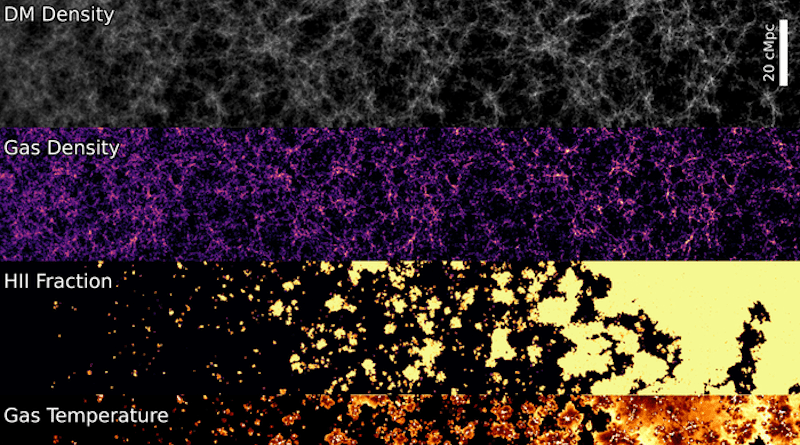Scientists Develop The Largest, Most Detailed Model Of Early Universe To Date
It all started around 13.8 billion years ago with a big, cosmological “bang” that brought the universe suddenly and spectacularly into existence. Shortly after, the infant universe cooled dramatically and went completely dark.
Then, within a couple hundred million years after the Big Bang, the universe woke up, as gravity gathered matter into the first stars and galaxies. Light from these first stars turned the surrounding gas into a hot, ionized plasma — a crucial transformation known as cosmic reionization that propelled the universe into the complex structure that we see today.
Now, scientists can get a detailed view of how the universe may have unfolded during this pivotal period with a new simulation, known as Thesan, developed by scientists at MIT, Harvard University, and the Max Planck Institute for Astrophysics.
Named after the Etruscan goddess of the dawn, Thesan is designed to simulate the “cosmic dawn,” and specifically cosmic reionization, a period which has been challenging to reconstruct, as it involves immensely complicated, chaotic interactions, including those between gravity, gas, and radiation.
The Thesan simulation resolves these interactions with the highest detail and over the largest volume of any previous simulation. It does so by combining a realistic model of galaxy formation with a new algorithm that tracks how light interacts with gas, along with a model for cosmic dust.
With Thesan, the researchers can simulate a cubic volume of the universe spanning 300 million light years across. They run the simulation forward in time to track the first appearance and evolution of hundreds of thousands of galaxies within this space, beginning around 400,000 years after the Big Bang, and through the first billion years.
So far, the simulations align with what few observations astronomers have of the early universe. As more observations are made of this period, for instance with the newly launched James Webb Space Telescope, Thesan may help to place such observations in cosmic context.
For now, the simulations are starting to shed light on certain processes, such as how far light can travel in the early universe, and which galaxies were responsible for reionization.
“Thesan acts as a bridge to the early universe,” says Aaron Smith, a NASA Einstein Fellow in MIT’s Kavli Institute for Astrophysics and Space Research. “It is intended to serve as an ideal simulation counterpart for upcoming observational facilities, which are poised to fundamentally alter our understanding of the cosmos.”

